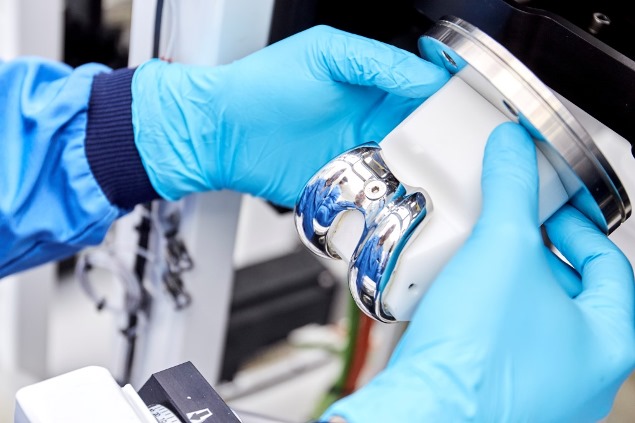
Case Study
SAFER implant testing for knee repair
Date: September 19, 2019
Researchers at the University of Leeds Institute of Medical and Biological Engineering are using an approach they call SAFER – Stratified Approaches for Enhanced Reliability.
The IKC’s strategy for implementing this approach is to develop technology to robustly model and rigorously test new implantable devices. With SAFER, new devices developed within the IKC and its partners are subject to thorough testing to discover the potential effects of patient and surgical variability on a device’s performance, and how these might affect failure rates and patient satisfaction.
The IKC is supporting Leeds researchers who are continually investigating new ways to improve testing methods so that patient stratification can be built into the design of new devices. This not only benefits patients, but reduces risk for commercial partners. Nowhere is this approach more apparent than in the joint simulation facility at the University of Leeds.
The facility, set up by the University in partnership with Simulation Solutions, is the largest independent simulation laboratory in the world for the pre-clinical testing of artificial implants.
Proof of concept funding from the IKC is allowing collaboration with industry to develop and test replacement knee implants designed to treat osteoarthritis patients.
A research team led by Dr Louise Jennings is using natural knee simulators to test decellularised animal cartilage. The team has developed machines that can simulate walking, applying a range of loads and motions that knees endure in the real world. This enables them to investigate plugs of bone and cartilage tissue known as osteochondral grafts that could be used to repair damage and degeneration and understand how they might perform in different patient groups.
Beyond osteochondral grafts, Dr Jennings hopes the simulators can be used to test other treatments too: “Most of the current interventions for conditions such as osteoarthritis lack evidence of pre-clinical performance and have variable patient outcomes. We desperately need new techniques, devices and procedures, that have been functionally tested biomechanically and tribologically. We are involved in the writing of international standards for device testing and our hope is that these standardised methods will be adopted internationally, so all devices will be properly and routinely tested before they go into patients.”
To plan successful treatment for individual patients, it may well be necessary to also understand the specifics of their individual knee function. Computer modelling techniques developed by IKC researchers – also within Leeds’ Institute of Medical and Biological Engineering – allow for a change of parameters and variants based on a patient’s anatomy and biomechanics. Understanding how particular implants might be affected by surrounding cartilage, for example, can help plan repair treatment. In some patients, the potential damage to surrounding tissue could mean certain treatments are not advisable.
Professor Ruth Wilcox and colleagues have already developed computer models of the natural knee and are now working on methods to represent variations between individual knees in the models. The knee is an incredibly complex joint and there are broad variations in function. So that the right treatment can be matched to the right patient, this variation must be considered.
In line with the SAFER approach, the computer models will enable different therapies, or different variants of a device, to be matched to different patient groups. Both teams’ pre-clinical tests reduce risk in developing a technology or device. If it is shown to work in vitro, then companies have more confidence to invest resources before animal or human trials begin. And, as Professor Wilcox also explains, a direct benefit to patients is testing of devices already available: “Our computer and experimental models can also be used to help predict who could benefit from which treatments. It is precisely our ability to define specifics about an individual that will help us know what will and won’t work.”
Back to Case Studies
